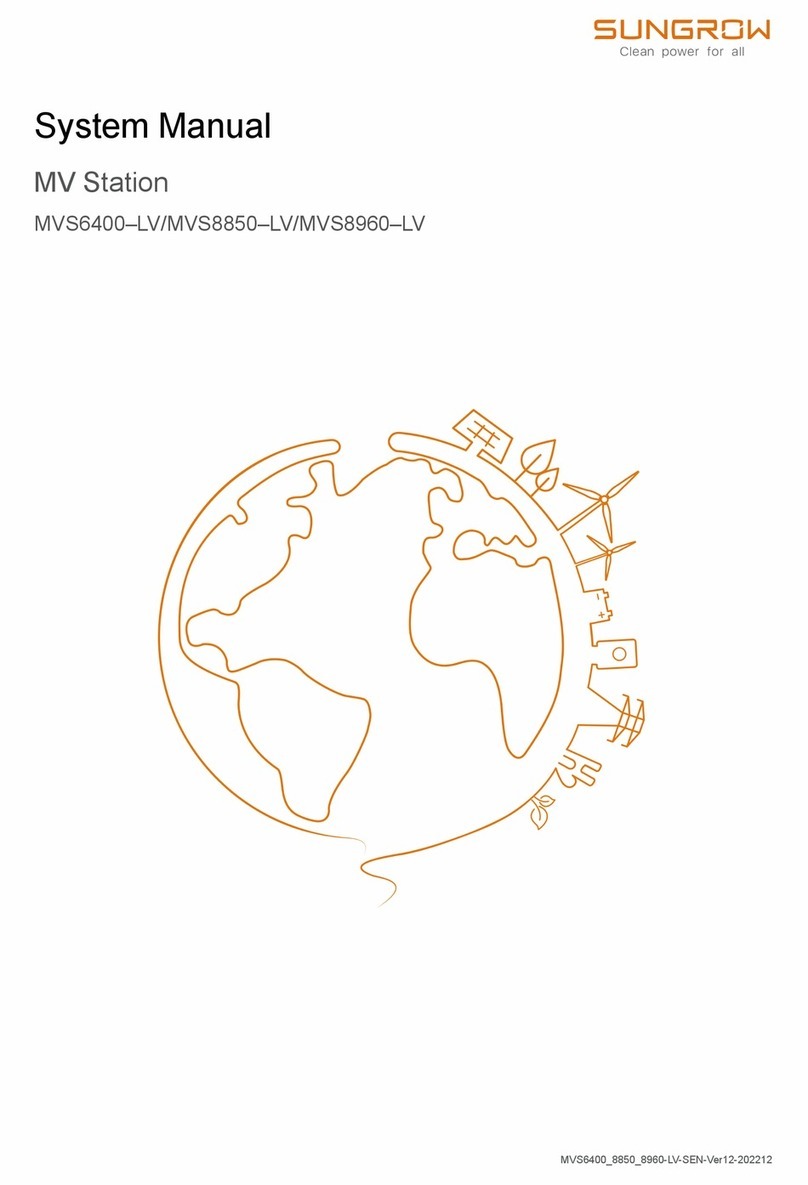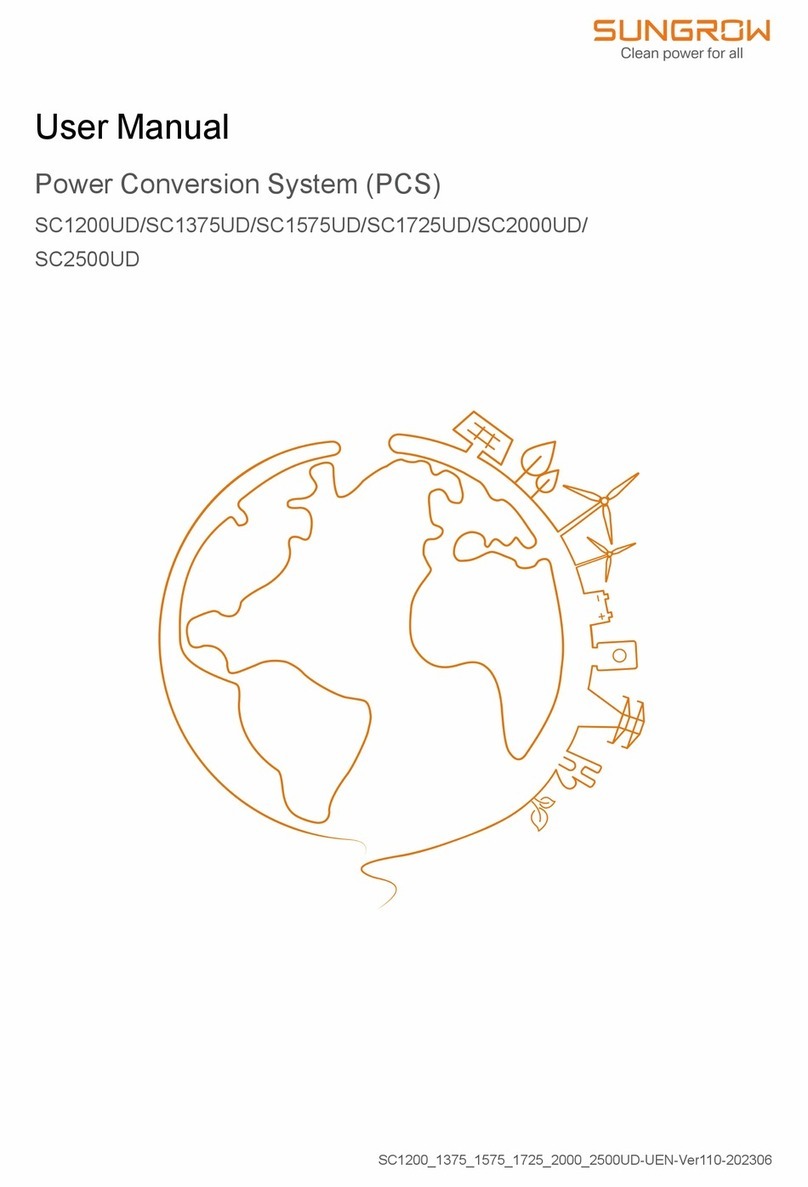
VI
8iSolarCloud APP................................................................42
8.1 Brief Introduction......................................................................42
8.2 Download and Install................................................................42
8.3 Menu........................................................................................43
8.4 Login........................................................................................43
8.4.1 Requirements.......................................................................... 43
8.4.2 Login Steps............................................................................. 44
8.5 Home page..............................................................................45
8.6 Running Information.................................................................47
8.7 History Record.........................................................................48
8.7.1 Alarm Records......................................................................... 48
8.7.2 Charge and Discharge Records.............................................. 49
8.7.3 Event Records......................................................................... 50
8.8 More.........................................................................................51
8.8.1 Boot / Hot standby / Shutdown................................................ 52
8.8.2 System parameter................................................................... 52
8.8.3 Communication parameters .................................................... 53
8.8.4 Operation parameters ............................................................. 54
8.8.5 Charging & Discharging management..................................... 56
8.8.6 Download the log .................................................................... 56
8.8.7 Firmware update..................................................................... 57
8.9 Configuring BMS Data Sources...............................................57
9Disconnecting, Dismantling and Disposing the PCS ...60
9.1 Disconnecting the PCS............................................................60
9.2 Dismantling the PCS................................................................61
9.3 Disposing the PCS...................................................................61
10 Troubleshooting and Maintenance..................................63
10.1 Troubleshooting.......................................................................63
10.2 Maintenance ............................................................................66
10.2.1 Routine Maintenance ............................................................ 66
10.2.2 Maintenance Instruction........................................................ 66
11 Appendix............................................................................69
































